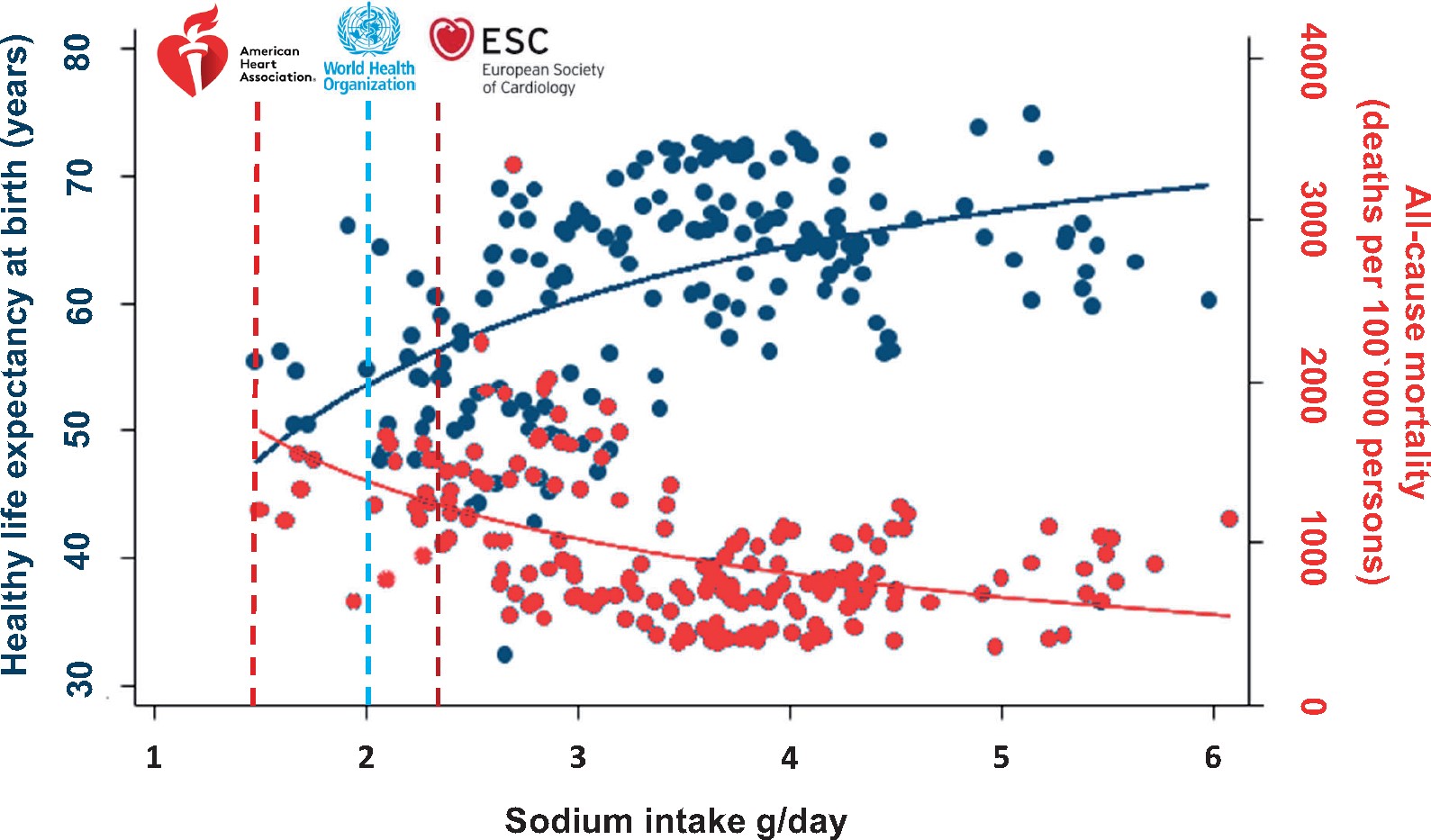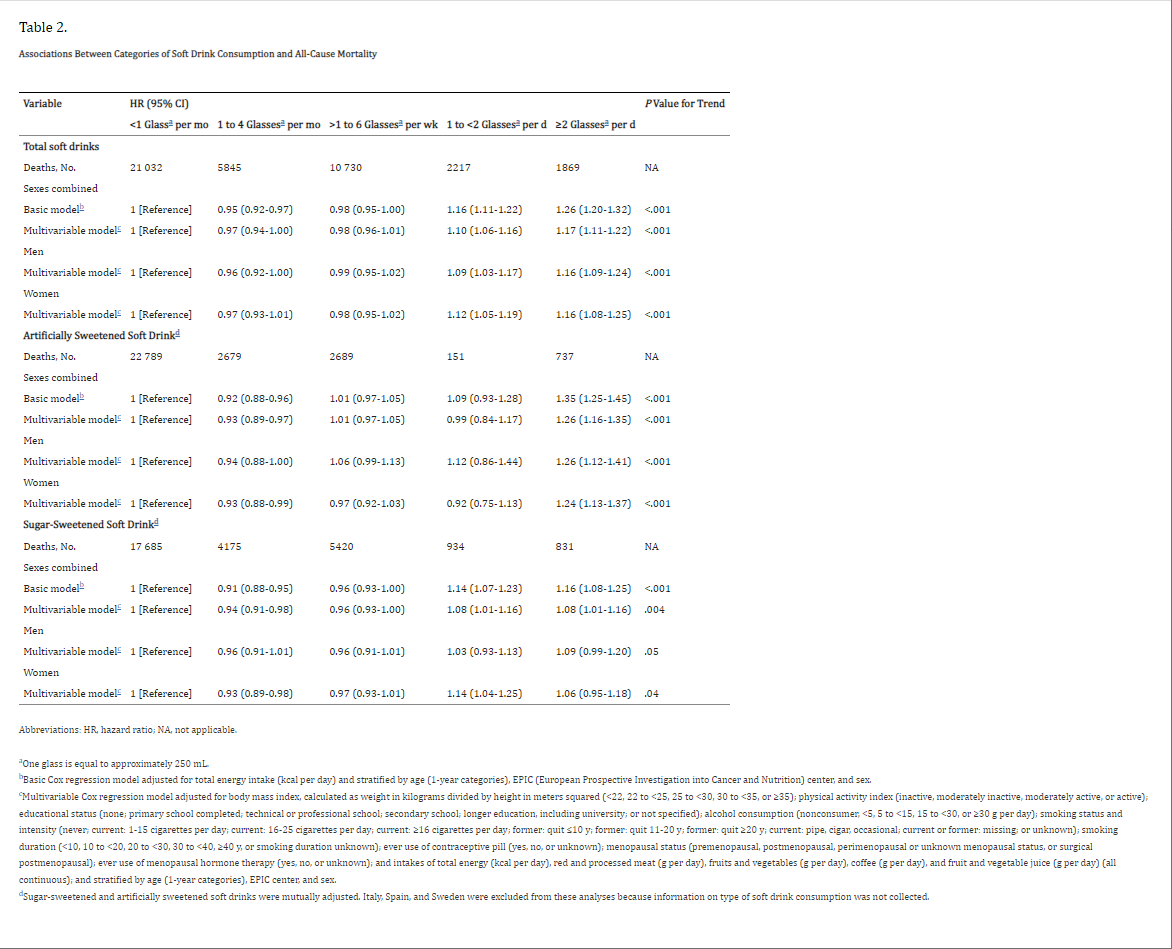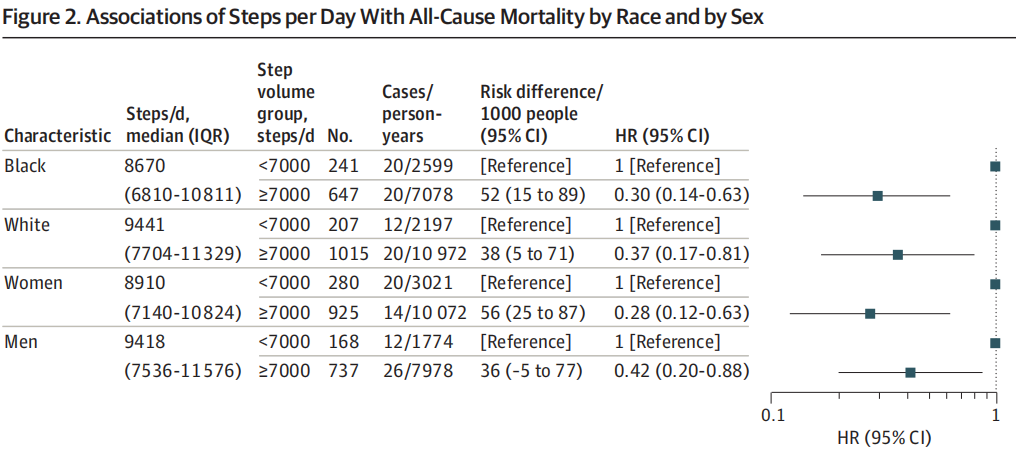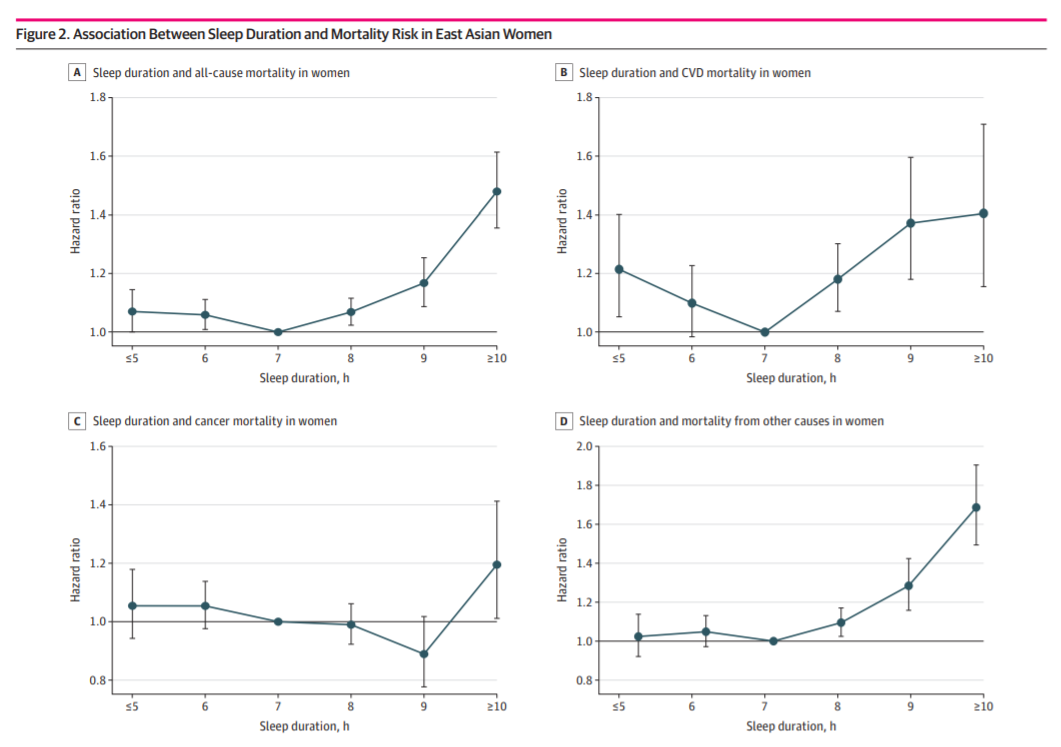- 1. Glossary
- 2. Objective
- 3. Key Result
- 4. Analysis
- 5. Action
- 6. Reference
- ACM: All-Cause Mortality
- Live longer
- Less work time: check MetaGPT
- Reduces ACM by 66.67%
- Increase life expectancy by ~20 years
Keep dopamine at a balanced level
- Main reference: There are relatively many academic papers related to ACM, which can be used as the main reference.
- The relationship between lifespan and ACM is nonlinear: Obviously, the relationship between lifespan and ACM is a nonlinear function. Assumption:
DeltaLifeSpan=(1/(1+DeltaACM)-1)*10(DeltaACM is ACM's change value. Welcome to optimize this formula) - Variables cannot be simply superimposed: Variables do not meet the IID assumption, and the actual effect between the variables is also unclear.
- Conflicting views: All references have literature/study counterparts, but there are significant conflicting views between some of the literature(e.g. Carbohtdrate intake retio), and some of the literature are controversial(e.g. Sleep before 22:00 increases ACM by 43%)
- Research only shows correlation: Research shows more correlation than causation. Confirm whether the research adequately proves causation.
- e.g. A research shows that people with an average of 7000 or more steps per day have a significantly lower ACM rate. However, people with fewer steps may include more long-term patients. If this part of data is not reasonably excluded, the result is distorted.
- Input
- Solid: Plain boiled pork(-11%~-3% ACM), Fruits and vegetables(-26%~-17% ACM), Spicy food(-23% ACM), Nuts(-27%~-4% ACM), less egg yolk(otherwise +7% ACM per 0.5 pieces per day)(controversial), moderate carbs, Vegetable protein(-10% ACM), less ultra-processed foods(-62%~-18%)
- Liquid: Coffee(-22%~-12% ACM), Milk(-17%~-10% ACM), Tea(-15%~-8% ACM), Limit or avoid sweetened beverages(Otherwise +7% ACM per cup per day, +dopamine), Give up alcohol or less than 100g per week(pure alcohol(g)=alcohol consumption(ml)×Alcohol concentration(%)×(Alcohol density)0.8g/ml)(Otherwise +~50% ACM, unlimited)
- Gas: No smoking(Otherwise +~50% ACM, -12~-11 years lifespan)
- Illumination: Sunbathe(-~40% ACM)
- Medicine: Metformin(for diabetic, +3 years lifespan), Multi-vitamins(-8% cancer risk), Spermidine(-60%~-30% ACM), Glucosamine(-39% ACM)
- Output
- Sports: 45-minute racquet sports 3 times a week(-47% ACM)
- Everyday life: Brush your teeth(-25% ACM)
- Sleep: Sleep 7 hours a day. (fall asleep between 22-24 o'clock) earlier +43% ACM, later +15% ACM(controversial)
- Other
- Weight: Lose weight(-54% ACM)
- Plain boiled pork
- Meat Consumption Linked to Small Rises in CVD, All-Cause Mortality Risks
- Reference: Associations of Processed Meat, Unprocessed Red Meat, Poultry, or Fish Intake With Incident Cardiovascular Disease and All-Cause Mortality
- Increased red meat intake is associated with risk of death. Respondents who increased red meat intake by at least half a serving per day on average over eight years had a 10% increase in ACM over the next eight years. (HR, 1.10[95%CI, 1.04-1.17])
- Eating two servings of read or processed meat(excluding poultry or fish) per week increases ACM by 3%.
P.S. Half serving of red meat is equivalent to 14g processed red meat or 40g unprocessed red meat
- 红肉和白肉最大的区别是什么?为啥要这么分呢?(Mandarin, Use Chrome's Translator)
- Meat Consumption Linked to Small Rises in CVD, All-Cause Mortality Risks
- Fruits and vegetables
- 每年54万人死亡, 竟是因为水果吃得少!?这已成十大死亡因素之一!(Mandarin, Use Chrome's Translator)
- Reference: Estimated Global, Regional, and National Cardiovascular Disease Burdens Related to Fruit and Vegetable Consumption: An Analysis from the Global Dietary Database (FS01-01-19)
- A daily intake of 200g fresh fruit can reduce ACM by 17%, the risk of diabetic macrovascular complications (e.g. stroke, ischemic heart disease, etc.) by 13%, and the risk of diabetic small blood vessel complications (e.g. diabetic nephropathy, diabetic eye disease, diabetic foot disease, etc.) by 28%.
- 《自然》子刊: 每天二两西兰花, 健康长寿都有啦!分析近6万人23年的数据发现, 吃含黄酮类食物与死亡风险降低20%相关丨临床大发现(Mandarin, Use Chrome's Translator)
- Reference: Flavonoid intake is associated with lower mortality in the Danish Diet Cancer and Health Cohort
- Eating flavonoid-rich foods linked to 20% lower risk of death

- "Interestingly, these threshold levels exist well within daily dietary achievable limits: one cup of tea, one apple, one orange, 100g of blueberries, and 100g of broccoli would provide most of the flavonoid subclasses and over 500mg of total flavonoids."says Dr. Bondonno.
- 每年54万人死亡, 竟是因为水果吃得少!?这已成十大死亡因素之一!(Mandarin, Use Chrome's Translator)
- Chili
- 辣椒成死亡克星?据调研, 常吃辣患病死亡风险可降低61%(Mandarin, Use Chrome's Translator)
- Reference 1: Chili pepper consumption and mortality in Italian adults
- Reference 2: The Association of Hot Red Chili Pepper Consumption and Mortality: A Large Population-Based Cohort Study
- Another study from Plos One in 2017 looked at 16,179 people aged 18+ and followed them up to 19 years. It was found that among the 4946 patients who died, the ACM rate was 21.6% for those who ate chili peppers, compared with 33.6% for those who did not eat chili peppers. For those who ate spicy food more than four times a week, the overall risk of death was reduced by 23%, and the risk of cardiovascular death was reduced by 34%.
- 辣椒成死亡克星?据调研, 常吃辣患病死亡风险可降低61%(Mandarin, Use Chrome's Translator)
- Eggs
- 每天多吃半个蛋, 增加7%的全因和心血管死亡风险?(Mandarin, Use Chrome's Translator)
- Reference: NIH-AARP Diet and Health Study, Egg and cholesterol consumption and mortality from cardiovascular and different causes in the United States: A population-based cohort study
- Each additional half a whole egg/day was associated with a 7% (HR 1.07; 95% CI 1.06–1.08; P < 0.001) higher risk of all-cause mortality.In hypothetical substitution analyses, we found 6%, 8%, 9%, 7%, 13%, and 10% lower all-cause mortality when replacing half a whole egg (25 g/day) with equivalent amounts of egg whites/substitutes, poultry, fish, dairy products, nuts, and legumes, respectively.

- 每天多吃半个蛋, 增加7%的全因和心血管死亡风险?(Mandarin, Use Chrome's Translator)
- Nuts
- 哈佛20年研究: 吃核桃的人更长寿, 显著减少全因死亡, 延长寿命(Mandarin, Use Chrome's Translator)
- Reference: Association of Walnut Consumption with Total and Cause-Specific Mortality and Life Expectancy in US Adults
- The analysis found that regular consumption of walnuts can prolong life and reduce the risk of death from cardiovascular disease. Compared with no walnuts, eating more than 5 servings(1 serving defined as 28g) of walnuts per week increased healthy life expectancy by 1.3 years and reduced the risk of SCM by 14%, and the risk of cardiovascular mortality by 25%.
- 研究: 每日食生坚果, 死亡率降20%(Mandarin, Use Chrome's Translator)
- Reference 1: Association of nut consumption with total and cause-specific mortality
- Reference 2: APG_Health-&-Nutrition-Research-Brochure_DEC-19-18
- The researchers found that those who ate less than 1 ounce servings of tree nuts per week had a 7 percent lower mortality rate. Those who ate 1 ounce per week had an 11% reduction in mortality; those who ate 2 per week had a 13% reduction; those who ate 5 to 6 per week had a 15% reduction; and those who ate more than 7 per week had a 20% reduction in mortality.
- Two other premed research papers published in the Public Library of Science Online Journal and BioMed Central presented cross-sectional data at the start of the trial. Both studies evaluated 7,216 subjects and the relationship between the frequency and amount of nuts they consumed.Those who ate more than three servings of nuts(including pistachios) a week had a 39 percent lower mortality rate.
- 哈佛20年研究: 吃核桃的人更长寿, 显著减少全因死亡, 延长寿命(Mandarin, Use Chrome's Translator)
- Sodium(Seriously controversial)
- Eur Heart J: 钠摄入量与预期寿命, 全因死亡率的关系(Mandarin, Use Chrome's Translator)
- Reference: Messerli F H, Hofstetter L, Syrogiannouli L, et al. Sodium intake, life expectancy, and all-cause mortality[J]. European heart journal, 2021, 42(21): 2103-2112.

- Among the 181 countries included in this analysis, we found a positive correlation between sodium intake and healthy life expectancy at birth (β = 2.6 years/g of daily sodium intake, R2 = 0.66, P < 0.001), as well as healthy life expectancy at age 60(β = 0.3 years/g of daily sodium intake, R2 = 0.60, P = 0.048) but not for death due to non-communicable diseases(β = 17 events/g of daily sodium intake, R2 = 0.43, P = 0.100). Conversely, all-cause mortality correlated inversely with sodium intake (β = -131 events/g of daily sodium intake, R2 = 0.60, P < 0.001). In a sensitivity analysis restricted to 46 countries in the highest income class, sodium intake continued to correlate positively with healthy life expectancy at birth (β = 3.4 years/g of daily sodium intake, R2 = 0.53, P < 0.001) and inversely with all-cause mortality (β = -168 events/g of daily sodium intake, R2 = 0.50, P < 0.001).
- This (extensive) study links higher sodium intake with significantly lower ACM
- Extended interpretation and discussion of the paper: A Fresh Foray in the Salt Wars: Life Expectancy Higher With Greater Sodium Intake
- NEJM/Lancet: 不要吃太多盐, 中国饮食所致心血管病和癌症死亡全球第一, 吃低钠盐可降低全因死亡率(Mandarin, Use Chrome's Translator)
- However, many studies show that use low sodium salts can reduce the probability of a series of diseases and have a positive impact on the reduction of ACM.
- Eur Heart J: 钠摄入量与预期寿命, 全因死亡率的关系(Mandarin, Use Chrome's Translator)
- Carbohydrates(Seriously controversial)
- 低碳生酮饮食(四)碳水化合物与长期死亡率(Mandarin, Use Chrome's Translator)
- Reference: The Lancet Public Health - Dietary carbohydrate intake and mortality: a prospective cohort study and meta-analysis
- The less carbs, the shorter the lifespan. However, more carbs also slightly shorten lifespan. 50% carbs are associated with the longest lifespan.

- 最强营养搭配!BMJ: 这么吃, 心血管疾病和死亡风险更低(Mandarin, Use Chrome's Translator)
- 低碳生酮饮食(四)碳水化合物与长期死亡率(Mandarin, Use Chrome's Translator)
- Betel nut
- 如何看待槟榔嚼出来的癌症?槟榔致癌风险究竟有多大? - 丁香医生的回答 - 知乎(Mandarin, Use Chrome's Translator)
- Reference: Chewing Betel Quid and the Risk of Metabolic Disease, Cardiovascular Disease, and All-Cause Mortality: A Meta-Analysis(https://journals.plos.org/plosone/article?id=10.1371/journal.pone.0070679)
- Chewing betel nut increases ACM by 21%
- 如何看待槟榔嚼出来的癌症?槟榔致癌风险究竟有多大? - 丁香医生的回答 - 知乎(Mandarin, Use Chrome's Translator)
- Caloric Restriction
- 怎么看待BBC《进食, 断食与长寿》?(Mandarin, Use Chrome's Translator)
- Complex
- 最强营养搭配!BMJ: 这么吃, 心血管疾病和死亡风险更低(Mandarin, Use Chrome's Translator)
- Associations of fat and carbohydrate intake with cardiovascular disease and mortality: prospective cohort study of UK Biobank participants
- By analyzing these participants' data, the researchers found that carbohydrate (sugar, starch, and fiber) and protein intake were non-linearly associated with all-cause mortality, while fat was linearly associated with all-cause mortality. Among them, higher sugar intake was associated with a higher risk of all-cause mortality and cardiovascular disease, while higher intake of saturated fatty acids was associated with a higher risk of all-cause mortality.
- Fig 1: The relationship between various nutrients and ACM

- Fig 2: The relationship between various nutrients and cardiovascular disease

- **Further research showed that among all dietary patterns, the dietary pattern with the lowest risk of all-cause mortality was: 10-30g high fiber, 14-30% protein, 10-25% monounsaturated fatty acids, 5%-7% polyunsaturated fatty acids and 20%-30% starch intake. **
- Optimum energy source ratio: <24% starch, 15%-17% protein, >15% monounsaturated fatty acid, <15% sugar, 6% saturated fatty acid, 6% polyunsaturated fatty acid, >30ghigh fiber
- BMJ | 常吃薯片汉堡巧克力等食品, 平均死亡年龄仅仅为58岁, 死亡风险剧增(Mandarin, Use Chrome's Translator)
- Rico-Campà A, Martínez-González M A, Alvarez-Alvarez I, et al. Association between consumption of ultra-processed foods and all cause mortality: SUN prospective cohort study[J]. bmj, 2019, 365.
- Srour B, Fezeu L K, Kesse-Guyot E, et al. Ultra-processed food intake and risk of cardiovascular disease: prospective cohort study (NutriNet-Santé)[J]. bmj, 2019, 365.
- Lawrence M A, Baker P I. Ultra-processed food and adverse health outcomes[J]. bmj, 2019, 365.
- Milk
- 《柳叶刀》调研21个国家13万人: 每天1斤牛奶或酸奶, 心血管死亡风险下降23%(Mandarin, Use Chrome's Translator)
- Reference: Association of dairy intake with cardiovascular disease and mortality in 21 countries from five continents (PURE): a prospective cohort study
- People who ate two servings of dairy products a day had a 17% lower risk of all-cause death, a 23% lower risk of cardiovascular death, and a 33% lower risk of stroke compared to those who didn't eat dairy. (one serving was 244 grams of milk/yogurt, 15 grams of cheese, or 5 grams of butter)
- Tea
- 10万中国人随访7年发现, 每周喝三次茶与全因死亡风险降低15%, 预期寿命增加1.26年相关 (Mandarin, Use Chrome's Translator)
- Reference: Tea consumption and the risk of atherosclerotic cardiovascular disease and all-cause mortality: The China-PAR project
- 中国成年人饮茶与死亡风险的前瞻性关联研究(Mandarin, Use Chrome's Translator)
- A total of 34,661 deaths occurred in the 438,443 subjects included in the analysis during 11.1 years of follow-up.Compared with never tea drinkers, current non-daily tea drinkers and daily tea drinkers had HR values (95%CI) of all-cause mortality of 0.89 (0.86-0.91) and 0.92 (0.88-0.95), respectively. By gender The analysis showed that the protective effect of tea drinking on the risk of all-cause mortality was mainly seen in males (P<0.05 for interaction).
- Sugar-free (sweet) beverages
- 「无糖饮料使死亡风险增加 26 %」, 是真的吗?(Mandarin, Use Chrome's Translator)
- Association Between Soft Drink Consumption and Mortality in 10 European Countries
- Sugary drinks
- 可乐和奶茶, 增加全因死亡率高达62%!果汁降低免疫力, 影响肝代谢!含糖饮料那些事(Mandarin, Use Chrome's Translator)
- 1 cup of sugar-sweetened beverages per day increases all-cause mortality by 7%, and 2 cups increases all-cause mortality by 21%
- During 34 years of follow-up, the researchers found that those who drank 2 cups a day had a 21% higher risk of death overall, a 31% higher risk of death from cardiovascular disease, and a 16% higher risk of death from cancer than those who drank 1 or less sugar-sweetened beverages a month.
- Drinking one extra sugar-sweetened beverage per day was associated with a 7% increased risk of overall death, a 10% increased risk of cardiovascular disease, and a 16% increased risk of cancer-related death.
- A paper published in the "BMJ" proves that sugar-sweetened beverages can increase the risk of cancer. The overall cancer risk associated with sugar-sweetened beverages was 18% higher than usual, and 100% freshly squeezed fruit juice also increased the overall cancer risk by 12%.
- 可乐和奶茶, 增加全因死亡率高达62%!果汁降低免疫力, 影响肝代谢!含糖饮料那些事(Mandarin, Use Chrome's Translator)
- Juice
- JAMA子刊: 100%纯果汁可能比含糖饮料更危险(Mandarin, Use Chrome's Translator)
- Consuming an extra 12-ounce serving of sugar-sweetened beverages per day was associated with an 11% increased risk of all-cause mortality.
- Consuming an extra 12-ounce serving of fruit juice per day was associated with a 24% increased risk of all-cause mortality.
- JAMA子刊: 100%纯果汁可能比含糖饮料更危险(Mandarin, Use Chrome's Translator)
- Coffee
- 重磅!多篇研究证实喝咖啡与人群全因死亡率降低直接相关(Mandarin, Use Chrome's Translator)
- 科普 | 喝咖啡又多了一个新理由: 降低死亡率! (Mandarin, Use Chrome's Translator)
- 地中海成年人咖啡消耗量及全因, 心血管疾病和癌症的死亡率(Mandarin, Use Chrome's Translator)
- In the most recent meta-analysis, the study included 40 studies and 3,852,651 subjects from different countries.In this meta-analysis, non-linear relationships between coffee intake and all-cause mortality, CVD and cancer mortality were shown. Two cups of coffee per day were associated with the lowest cancer mortality (RR = 0.96), 2.5 cups per day for CVD mortality (RR = 0.83), and 3.5 cups per day for all-day mortality (RR = 0.85). And as coffee consumption increased, mortality did not further decrease or increase.
- Spermidine
- Science: 科学背书!从精液中发现的亚精胺, 竟然有着抗衰老, 抗癌, 保护心血管和神经, 改善肥胖和2型糖尿病等逆天神效(Mandarin, Use Chrome's Translator)
- 饮食中亚精胺摄入量高会降低死亡率(Mandarin, Use Chrome's Translator)
- Smoking
- 即使是低强度吸烟, 也增加死亡风险!(Mandarin, Use Chrome's Translator)
- Among the 42,416 men and 86,735 women(aged 35-89 years with no previous disease), 18,985 men (45%) and 18,072 women (21%) were current smokers, with 33% of men and 39% of women not smoking daily. 8866 men (21%) and 53 912 women (62%) never smoked. During follow-up, the hazard ratios for all-cause mortality compared with never smoking were 1.17 (95% CI 1.10-1.25) and 1.54 (1.42-1.67) for <10 cigarettes per day or ≥10 cigarettes per day, respectively. Hazard ratios were similar regardless of age or gender. The diseases most closely associated with daily smoking are respiratory cancers, chronic obstructive pulmonary disease, and gastrointestinal and vascular diseases. People who quit smoking at the time of recruitment had lower mortality rates than current daily smokers.
- Smokers lose 11-12 years of life on average.
- 吸烟让人过瘾是什么原理?有节制的吸烟依旧有害吗?(Mandarin, Use Chrome's Translator)
- 即使是低强度吸烟, 也增加死亡风险!(Mandarin, Use Chrome's Translator)
- Sunbathe
- 晒太阳和死亡率的关系, 如何科学, 安全的晒太阳?
(Mandarin, Use Chrome's Translator)
- A 26-year Danish study found that more sun exposure significantly increased life expectancy, and even patients with skin cancer caused by excessive sun exposure lived an average of 6 years longer than the average person.
- 晒太阳和死亡率的关系, 如何科学, 安全的晒太阳?
(Mandarin, Use Chrome's Translator)
- NMN
- Metformin
- “胍”吹必看 丨我就是神药——二甲双胍(Mandarin, Use Chrome's Translator)
- Metformin not only plays a protective role in various tumors, cardiovascular diseases and diabetes, but also plays a role in obesity, liver disease, kidney disease and aging.
- 二甲双胍2020最值得了解的“吃瓜”大新闻——护胃, 健脑, 抗衰, 防癌还是致癌?(Mandarin, Use Chrome's Translator)
- 二甲双胍真的那么神吗?美研究: 父亲服用二甲双胍或致子女有缺陷(Mandarin, Use Chrome's Translator)

- Adverse reactions
- As a drug that has been used for nearly a hundred years, the adverse reactions of metformin have been very clear. The common ones are: vitamin B12 deficiency (7%-17.4%), gastrointestinal adverse reactions (up to 53%), fatigue (9%), headache (6%).
- Serious but infrequent adverse reactions include lactic acidosis, liver damage.
- Studies have also shown that it may be teratogenic to the fetus
- “胍”吹必看 丨我就是神药——二甲双胍(Mandarin, Use Chrome's Translator)
- Multi-vitamins
- 服用复合维生素可降低癌症危险8%, 其他效果并不显著(Mandarin, Use Chrome's Translator)
- Glucosamine
- 神奇!氨糖降低心血管死亡率65%, 与定期运动效果相当(Mandarin, Use Chrome's Translator)
- The latest research from West Virginia University found that glucosamine (chondroitin) can reduce cardiovascular mortality by 65% and reduce overall mortality by 39%, which is equivalent to regular exercise.
- The study used National Health and Nutrition Examination (NHANES) data from 16,686 adults from 1999 to 2010. Participants were followed for a median of 107 months, and 648 of them took 500-1000 mg of glucosamine/chondroitin daily for more than one year on a regular basis.
- Spermidine
- Science: 科学背书!从精液中发现的亚精胺, 竟然有着抗衰老, 抗癌, 保护心血管和神经, 改善肥胖和2型糖尿病等逆天神效(Mandarin, Use Chrome's Translator)
- Spermidine is the most easily absorbed polyamine from the human gut. Spermidine is found in high amounts in many foods, such as fresh green peppers, wheat germ, cauliflower, broccoli, mushrooms and various cheeses, especially in soy products such as natto, shiitake mushrooms and durian. In this experiment, the researchers selected 829 participants aged 45-84 for a 20-year follow-up to analyze the potential association between dietary spermidine intake and human mortality.
- The study found that women's spermidine intake was higher than men's, and the intake decreased with age. The main sources of spermidine were whole grains (13.4%), apples and pears (13.3%), salads (9.8%), sprouts (7.3%) and potatoes (6.4%). The study divided the population into three groups based on spermidine intake, low intake (<62.2 µmol/d), moderate intake (62.2–79.8 µmol/d), and high intake (>79.8 µmol/d). A total of 341 deaths were recorded during follow-up, including 137 from vascular disease, 94 from cancer, and 110 from other causes. The crude mortality rates for the low, middle, and high groups were calculated to be 40.5%, 23.7%, and 15.1%, respectively. These data indicate a significant inverse relationship between spermidine intake and all-cause mortality. The relationship remained significant with gradual adjustment for age, sex, and calorie ratios.
- Complex
- 《自然》子刊深度综述: 如何开发抗衰老药(Mandarin, Use Chrome's Translator)

- 哪种运动性价比最高?权威医学杂志“柳叶刀”给出答案了 (Mandarin, Use Chrome's Translator)
- Three times a week, 45-60 minutes of racquet sports, reduces all-cause mortality by ~47%
- Badminton, table tennis, tennis, etc. are all racquet sports. But due to the westernized research background, it may refer to tennis more. This implicitly expresses that the whole body exercise is more important. (Translator's Note: pickleball)
- New Study: 8 minutes of high-intensity exercise per day can reduce all-cause mortality and risk of heart disease
- 15-20 minutes of high-intensity exercise per week reduces all-cause mortality by 16-40%, and by spending 50-57 minutes/week on high-intensity exercise, you can further decrease your all-cause mortality rate. These findings suggest that by accumulating a relatively small amount of high-intensity exercise over a short time during the week, health risks can be reduced.
- 走路降低全因死亡率超过50%!每天走多少步最合适?《JAMA》子刊超10年研究告诉你答案(Mandarin, Use Chrome's Translator)
- 50万国人研究证实: 不好好刷牙, 致癌!血管疾病也会增多!(Mandarin, Use Chrome's Translator)
- People who don't brush their teeth regularly: increased risk of cancer, chronic obstructive pulmonary disease and cirrhosis by 9%, 12% and 25%, respectively, and increased risk of premature death by 25%.
- 定期洗澡降低心血管疾病发作风险(Mandarin, Use Chrome's Translator)
- A daily hot bath was associated with a 28% lower overall risk of cardiovascular disease, a 26% lower overall risk of stroke, and a 46% lower risk of cerebral hemorrhage compared to taking a bath one to two times a week or no bathing at all. The frequency was not associated with an increased risk of sudden cardiac death.
- Housework Reduces All-Cause and Cancer Mortality in Chinese Men
- Weekly heavy housework for men after age 72 can reduce the average mortality rate by 29%.
Heavy housework: vacuuming, mopping floors, mopping floors, scrubbing windows, washing cars, moving furniture, moving gas tanks, etc.
Light housework: dusting, washing dishes, hand washing clothes, ironing, drying clothes, cooking, shopping for daily necessities, etc.
- Weekly heavy housework for men after age 72 can reduce the average mortality rate by 29%.
- 超30万亚洲人数据: 每天睡几个小时最有益长寿?(Mandarin, Use Chrome's Translator)
- 颠覆认知!加拿大研究发现: 早睡比熬夜或许更伤身, 几点睡才好?(Mandarin, Use Chrome's Translator)
- One conclusion is that bedtime is strongly associated with all-cause mortality, and that going to bed too early and going to bed too late can affect health. But going to bed early was associated with higher all-cause mortality than going to bed late, with an increased risk of death by 43 percent and going to bed late by 15 percent.
- There are still many limitations in this research study. For example, it does not directly prove the relationship between bedtime and death, only shows the correlation, and the data obtained by using the self-reports of the participants to count sleep time are not objective enough.
- [Scientific Research Report of Chinese Resident Dietary Guidelines (2021)] (https://www.chinanutri.cn/yyjkzxpt/yyjkkpzx/yytsg/zgjm/202103/p02021031148670527.pdf)
- Sedentary and watching TV time is related to the high risk of death, cardiovascular disease, cancer, and 2 diabetes. It is an independent risk factor.For a long time, every 1 hour is increased every day, the risk of cardiovascular disease increases by 4%, and cancer increases by 1%, and the risk of death increases by 3%.The long -seated time threshold with increased risk of death and CVD death is 6 \ ~ 8H/d, and the time threshold for watching the TV is 3 \ ~ 4H/D.
- [Guide to the WHO on physical activity and sedentary behavior] (https://apps.who.int/iris/bitstream/handle/10665/337001/978924947- chi.pdf))
- 悲观情绪与更高的全因死亡率和心血管疾病死亡率有关, 但乐观情绪并不能起到保护作用(Mandarin, Use Chrome's Translator)
- Pessimism is associated with greater all-cause and cardiovascular mortality, but optimism is not protective
- The Life Orientation Test (LOT), containing items for optimism and pessimism, was included in a twin study on health of Australians aged over 50 in 1993–1995. After a mean of 20 years, participants were matched against death information from the Australian National Death Index. 1,068 out of 2,978 participants with useable LOT scores had died. Survival analysis tested for associations between separate optimism and pessimism scores and mortality from any cause, and from cancers, cardiovascular diseases or other known causes. Age-adjusted scores on the pessimism scale were associated with all-cause and cardiovascular mortality (Hazard Ratios per 1 standard deviation unit, 95% confidence intervals and p-values 1.134, 1.065–1.207, 8.85 × 10–5 and 1.196, 1.045–1.368, 0.0093, respectively) but not with cancer deaths. Optimism scores, which were only weakly correlated with pessimism scores (age-adjusted rank correlation = − 0.176), did not show significant associations with overall or cause-specific mortality. Reverse causation (disease causing pessimism) is unlikely because in that case both cardiovascular diseases and cancers would be expected to lead to pessimism.
- JAMA子刊: 贫富差距真能影响寿命?这可能是真的!(Mandarin, Use Chrome's Translator)
- The study used data from wave 1 of the MIDUS study (MIDUS 1), which were collected in 1994 to 1996. Survival models tested the association between net worth and all-cause mortality. The full sample comprised 5414 participants, who had a mean (SD) age of 46.7 (12.7) years and included 2766 women (51.1%). Higher net worth was associated with lower mortality risk (hazard ratio [HR], 0.95; 95% CI, 0.94-0.97; P<.001). Among siblings and twin pairs specifically (n=2490), a similar within-family association was observed between higher net worth and lower mortality (HR, 0.94; 95% CI, 0.91-0.97; P=.001), suggesting that the sibling or twin with more wealth tended to live longer than their co-sibling or co-twin with less wealth.
- JAMA子刊: 减肥要趁早, 才能有效降低死亡率风险(Mandarin, Use Chrome's Translator)
- Adults who lost weight from obese to overweight by midlife had a 54% lower risk of all-cause mortality (HR, 0.46; 95% CI, 0.27-0.77) compared with adults who were stable obese. Adults who lost weight from overweight in early adulthood to normal weight by midlife did not have reduced mortality risk (HR, 1.12; 95% CI, 0.86-1.45).

- Magnitude, demographics and dynamics of the effect of the first wave of the COVID-19 pandemic on all-cause mortality in 21 industrialized countries
- At present, the death rate of COVID-19 (US) is around 1.5%, and the average life expectancy has been reduced by 2 years
- 如何看待美国CDC宣称新冠死亡人数被高估?(Mandarin, Use Chrome's Translator)
- NVSS deaths








